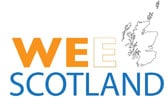 These days, Scotland is the subject of endless, sometimes hysterical stories of doom, gloom and impending ruin. It’s a wonder we haven’t all drowned in entropy or spontaneously imploded.
These days, Scotland is the subject of endless, sometimes hysterical stories of doom, gloom and impending ruin. It’s a wonder we haven’t all drowned in entropy or spontaneously imploded.
It’s a ludicrous and depressing distraction, but fortunately as this ethereally-mongered fear falls to earth it is finding itself slowly overgrown by green shoots. Life remains challenging but there are signs of spring, at least metaphorically.
Take last weekend’s RIAS International Convention, which took as it its theme ‘BIG World, WEE Scotland’. The event grew in the telling, culminating in a warmly barbed poetic contribution from the Scots Makar, Liz Lochhead. There were examples of positive projects and programmes from Europe and the UK, with the transformation of Copenhagen into a people-friendly city a particular inspiration to all who gathered.
Case studies from our close neighbours, Norway, Denmark and the Netherlands suggested they are all big enough, wealthy enough and smart enough not only to take care of themselves but to prosper as modern societies.
My own case studies included Tomintoul & Glenlivet, where the communities are rapidly rediscovering themselves. Their recently adopted Regeneration Strategy bridges the urban and rural divide by co-ordinating action across the historic planned village of Tomintoul, the dispersed rural settlement of Glenlivet and a thinly populated 200km2 rural catchment. Its scope extends well beyond large-scale habitat and landscape focused approaches such as RSPB’s Futurescapes and SWT’s Living Landscapes by also focusing on people, communities and place.
A translation of this planner-speak might read, ‘many local people have come together to improve the place they live’. It’s a project which has grown from the ground up, led tentatively then expertly by the community. It attracted exceptionally dynamic and motivated support from the Cairngorms National Park Authority, giving it momentum.
It won backing from the Crown Estate at Glenlivet – the major landowner in the area. Soon, Moray Council, Highlands & Islands Enterprise and Visit Scotland also climbed aboard. A partnership centred on the two local community associations and the area business group has underpinned the Regeneration Strategy.
A previously divided community exposed to long term socio-economic shifts and public service downgrading is rapidly reinventing itself. Membership of a new delivery vehicle – the Tomintoul & Glenlivet Development Trust – already exceeds 25% of the local population.
The area has been selected as one of only 6 community broadband pioneer projects in Scotland. An under-performing Youth Hostel has been taken on by the Trust and renovation is underway. The Crown Estate is on site with a £500,000 Mountain Biking Centre. Gateway public realm and landscaping is proceeding with Cairngorms National Park Authority-secured ‘shovel ready’ Scottish Government funding.
Obviously this alone will not transform Scotland’s economy or society. It won’t register as a case study of ‘BIG World’ significance. However, in its own way, it is a beacon amongst numerous illuminating projects across Scotland, where people and communities are taking a lead in reinvigorating themselves.
As an antidote to our inability to see opportunity, possibility and capability, WEE Scotland has BIG lessons for us all.
“If aw his hums and haws were hams and haggises, the country wad be weel fed!” Liz Lochhead, Mary Queen of Scots Got Her Head Chopped Off, 1987.
Richard Heggie
21 May 2013
